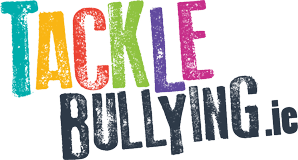Disablist Bullying is when people are bullied because they have a disability. The motivations for disablist bullying may include discrimination on the basis of a disability, or a lack of understanding of a person’s disability.
Disablist Bullying may be perpetrated by both those with and without a disability; and includes similar types of bullying such as physical, verbal, gesture, exclusion and extortion bullying.
The National Disability Authority (NDA) found that children with Special Educational Needs and Disabilities (SEND), are more likely to be bullied that children without SEND. School children with intellectual disabilities are 3.5 times more likely to be bullied in comparison to their age-related peers.
Factors of Disablist Bullying
People with Special Educational Needs and Disabilities are often excluded in and outside schools because people don’t understand a person’s disability.
Research by Mencap (The Royal Society for Intellectual Disability) found that “82% of children and young people with a learning disability have experienced bullying” and are “twice as likely to be bullied as other children.”
Victims of Disablist Bullying may sometimes be afraid to leave their homes because of bullying, as they feel they will be targeted in school or on their way to or from school.
All children have the right to feel safe in their school and local communities. Children with special educational needs or disabilities also have this right – to learn and grow up in a safe space without discrimination and harassment.
Children with an intellectual disability are more likely to be targeted as they may not understand bullying and are therefore seen as being easy targets.
Disablist Bullying is extremely harmful as it is based on prejudice, and those who are targets may not know how to seek support, or express what they are experiencing.
People who bully others may also target individuals with disabilities by taking their belongings, or excluding them from activities. This bullying can cause low self-esteem in individuals, therefore making it harder for those with disabilities to make friends.
Research has also found that “56% of children with a learning disability said they cried because of bullying”, and “33% hid away in their room not wanting to make friends with other children.”
How Can We Prevent Disablist Bullying?
We can all work to prevent Disablist Bullying in and outside of schools by being more inclusive, understanding and supporting people with Special Educational Needs and Disabilities (SEN/D).
Examples of some school exercises that can be done in pairs or groups, for pupils with and without SEN/D are:
- Class projects, daily classroom tasks or jobs for everyone.
- Make a Bullying Wall Project; “What it feels like to be bullied.”
- Extracurricular activities – art clubs, chess clubs, movie and book clubs.
- Homework clubs
- Buddy systems
What Can My School Do to Prevent Disablist Bullying?
To prevent Disablist Bullying in schools, strong leadership and a whole school approach is important to create an inclusive environment. Some steps to achieve this are:
- Good transition planning
- Staff training in Special Education and teaching methods
- Addressing the needs and goals of children with special educational needs and disabilities.
- Resilience/self-esteem programmes
- Staff training in bullying awareness and intervention
- Allocate SNA’s to promote interaction and support
- Supervision of pupils who may be targeted throughout the school day.
